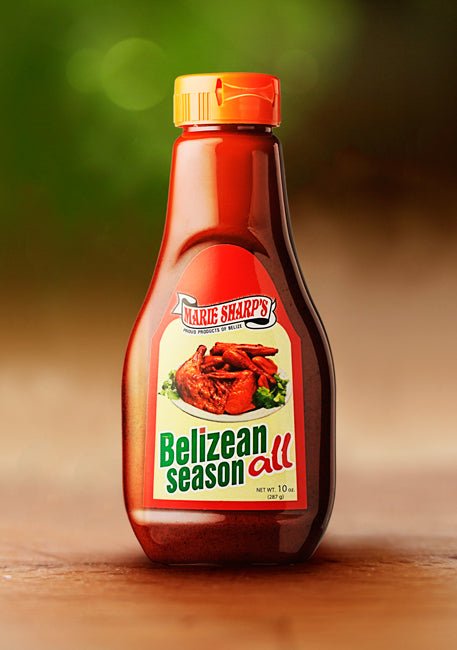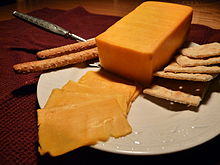Belizean Season-All, 10 oz (Red Recado / Annatto / Achiote Paste)
$5.99 USD
Marie Sharp's Season All (Red Recado) is a delicious blend of heirloom annatto - grown on the Melinda Estate - fresh fruit vinegar, hand chopped white onion, freshly roasted garlic and secret spices.
It can comprehensively season and deeply color anything from beef stews to pork, chicken and seafood.
Squeeze a little over stews, pork, beef or chicken or brush our Belizean season all on to your chicken and roasts. This will give you a gorgeous color and a tasty gravy.
Use sparingly. This product is concentrated and contains all the necessary spices for seasoning your dishes.
Mindfully made in Belize, Central America, by Marie Sharp's - 10 oz (296 ml)
Our Red Recado is the highest quality achiote/annatto-based seasoning product obtainable.
You will find BHTA, sodium benzoate, artificial colors and cheap granulated spices is most other annatto-based products.
Annatto - What is it?
Annatto is native to tropical regions in Mexico, Central America, South America and the Caribbean. It was used by ancient Mayans as a body paint, and by Aztecs to deepen the color of their chocolate drink, according to the Handbook of Spices, Seasonings and Flavorings by Susheela Raghavan.
What does it taste like?
I chewed on a whole seed, which had a mild flavor that I could best describe as claylike. Others say it's slightly sweet and peppery, musky, or has a flowery scent. In Mexican Everyday, Chicago chef Rick Bayless calls achiote paste (a mixture of annatto seeds and other spices) "a flavor that tastes as though it's been unchanged since pre-Columbian times."
So, what the heck do I do with it?
First off, let me tell you what not to do with it: don't buy whole annatto seeds unless you have a diamond cutter, or at least a high-powered spice grinder. I was intending to make Bayless's recipe for Grilled Fish in Tangy Yucatecan Achiote with Green Beans and Roasted Tomato Salsa. I somehow didn't read the part where he recommends buying pre-ground achiote from a Latino grocer or website because the seeds are so hard to grind. I had a packet of whole seeds, which the label instructed could be ground with a mortar and pestle. Ha! After a few minutes of pestling the seeds with all my might (which, admittedly, is not formidable), they were frustratingly intact save for a red-orange stain in the bowl. I enlisted my spouse's physical-labor-enhanced forearms, but his result wasn't much better. I don't have a spice grinder, so I tried my mini–food processor; the seeds just ricocheted around like pebbles in a vacuum cleaner. I tried soaking them in hot water for two hours, on a suggestion I found online. All I had to show for it was a stained mini-processor and some moistened but otherwise unperturbed seeds. Finally, I just left the seeds in oil overnight (by this time I had given up and made something else for dinner), then blended the infused oil with the other ingredients in the recipe the next evening. The dish came out well, though I don't know if it would have tasted any different without the tinted oil.
Learn from my tribulations and buy pre-ground achiote. Then make cochinita pibil, a spicy pulled pork from the Yucatán. Or look for the Goya brand spice blend called Sazon con culantro y achiote to make classic Puerto Rican arroz con pollo.
Or try Filipino-style tamales—the Tagalog word for annatto is atsuete—made with rice instead of corn."
Wiki Info
Annatto (/əˈnætoʊ/ or /əˈnɑːtoʊ/) is an orange-red condiment and food coloring derived from the seeds of the achiote tree (Bixa orellana) native to tropical regions from Mexico to Brazil.[1] It is often used to impart a yellow or orange color to foods, but sometimes also for its flavor and aroma. Its scent is described as "slightly peppery with a hint of nutmeg" and flavor as "slightly nutty, sweet and peppery".[2]
The color of annatto comes from various carotenoid pigments, mainly bixin and norbixin, found in the reddish waxy coating of the seeds. The condiment is typically prepared by grinding the seeds to a powder or paste. Similar effects can be obtained by extracting some of the color and flavor principles from the seeds with hot water, oil, or lard, which are then added to the food.[3]
Annatto and its extracts are now widely used in an artisanal or industrial scale as a coloring agent in many processed food products, such as cheeses, dairy spreads, butter and margarine, custards, cakes and other baked goods, potatoes, snack foods, breakfast cereals, smoked fish, sausages, and more. In these uses, annatto is a natural alternative to synthetic food coloring compounds, but it has been linked to rare cases of food-related allergies.[4] Annatto is of particular commercial value in the United States because the Food and Drug Administration considers colorants derived from it to be "exempt of certification".
History
The annatto tree B. orellana is believed to originate in tropical regions from Mexico to Brazil.[1][5] It was probably not initially used as a food additive, but for other purposes such as ritual and decorative body painting (still an important tradition in many Brazilian native tribes, such as the Wari'), sunscreen, and insect repellent, and for medical purposes.[6][7][8] It was used for Mexican manuscript painting in the 16th century.[9]
Annatto has been traditionally used as both a coloring and flavoring agent in Latin America, the Caribbean, the Philippines, and other countries where it was taken home by Spanish and Portuguese explorers in the 16th century.[1] It has various local names according to region.[1] Its use has spread in historic times to other parts of the world, and it was incorporated in local culinary traditions of many countries outside the Americas.[10]
Culinary uses
Traditional cuisine
Ground annatto seeds, often mixed with other seeds or spices, are used in the form of paste or powder for culinary use, especially in Latin American, Jamaican, Belizean, Chamorro, Vietnamese, and Filipino cuisines. In Mexican and Belizean cuisines, it is used to make the spice recado rojo. In Venezuela, annatto is used in the preparation of hallacas, huevos pericos, and other traditional dishes. Pasteles and sazón in Puerto Rico also contain annatto. Annatto paste is an important ingredient of cochinita pibil, the spicy pork dish popular in Mexico. It is also a key ingredient in the drink tascalate from Chiapas, Mexico. In the Philippines, it is used for the sauce of pancit.











